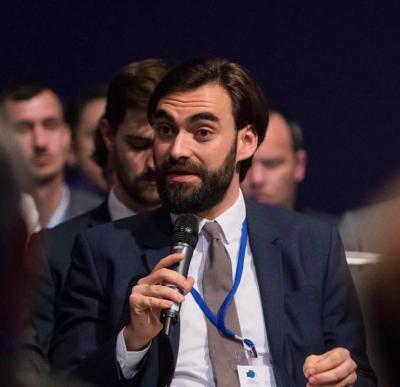

 ICANN created the Trademark Clearinghouse (TMCH) as a way to streamline the repetitive process forced on trademark owners during the launch of new top-level-domains. With the expected tsunami of hundreds of new TLD's starting later this year, the TMCH should generate a clear benefit for trademark owners who elect to participate in Sunrise and Claims Periods. The side effect of introducing new TLDs is that the legacy TLDs will be making changes to make sure they are competitive against the new TLDs.
ICANN created the Trademark Clearinghouse (TMCH) as a way to streamline the repetitive process forced on trademark owners during the launch of new top-level-domains. With the expected tsunami of hundreds of new TLD's starting later this year, the TMCH should generate a clear benefit for trademark owners who elect to participate in Sunrise and Claims Periods. The side effect of introducing new TLDs is that the legacy TLDs will be making changes to make sure they are competitive against the new TLDs.
 Kenzie is a security researcher who has registered numerous domain names that are typographic errors of well-known trademarks (e.g., rnastercard, rncdonalds, nevvscorp, rncafee, macvvorld, rnonster, pcvvorld). He points the domain names to the actual sites in question (e.g., rncdonalds points to mcdonalds.com), but he is looking to demonstrate how these typo domains are used for "social engineering" attacks.
Kenzie is a security researcher who has registered numerous domain names that are typographic errors of well-known trademarks (e.g., rnastercard, rncdonalds, nevvscorp, rncafee, macvvorld, rnonster, pcvvorld). He points the domain names to the actual sites in question (e.g., rncdonalds points to mcdonalds.com), but he is looking to demonstrate how these typo domains are used for "social engineering" attacks.
 "We need to break down silos", is a phrase often heard in national and international meetings around cyber security and enforcing cyber crime. So it is no coincidence that at the upcoming NLIGF (Netherlands Internet Governance Forum), the IGF, but also an EU driven event like ICT 2013 have "Breaking down silos" and "Building bridges" on the agenda. But what does it mean? And how to do so?
"We need to break down silos", is a phrase often heard in national and international meetings around cyber security and enforcing cyber crime. So it is no coincidence that at the upcoming NLIGF (Netherlands Internet Governance Forum), the IGF, but also an EU driven event like ICT 2013 have "Breaking down silos" and "Building bridges" on the agenda. But what does it mean? And how to do so?
 With much fanfare last month, Uniregistry announced that proposals for dispute resolution between New TLD applicants in lieu of ICANN's so-called "Auction of Last Resort" posed significant antitrust risks. Their claim of concern was not based on any critical antitrust analysis, but rather on the fact that they had sought a "Business Review" letter from the Antitrust Division of the U.S. Department of Justice (DOJ), and, according to Uniregistry, the DOJ failed to provide them a positive response and discussed the issue with them.
With much fanfare last month, Uniregistry announced that proposals for dispute resolution between New TLD applicants in lieu of ICANN's so-called "Auction of Last Resort" posed significant antitrust risks. Their claim of concern was not based on any critical antitrust analysis, but rather on the fact that they had sought a "Business Review" letter from the Antitrust Division of the U.S. Department of Justice (DOJ), and, according to Uniregistry, the DOJ failed to provide them a positive response and discussed the issue with them.
 Well it is not new that the US has always maintained that the Internet should be a tax free zone as per the US Congress's Tax Freedom Act 1998 which following expiry continued to be reauthorized and its most recent re-authorization (legal speak for extension) was in October 2007 where this has been extended till 2014. It is unclear whether there will be another extension post 2014. There is a moratorium on new taxes on e-commerce, and the taxing of internet access via the Tax Freedom Act.
Well it is not new that the US has always maintained that the Internet should be a tax free zone as per the US Congress's Tax Freedom Act 1998 which following expiry continued to be reauthorized and its most recent re-authorization (legal speak for extension) was in October 2007 where this has been extended till 2014. It is unclear whether there will be another extension post 2014. There is a moratorium on new taxes on e-commerce, and the taxing of internet access via the Tax Freedom Act.
 This last article on the four new gTLD objections will look at the Legal Rights Objection ("LRO"). While other articles in this series have touched on trademark concepts at certain points, issues from that area of the law predominate in LRO. Here we review the pertinent LRO-related trademark concepts, with which many readers likely will have some familiarity from working with domains and the UDRP. Still, the theme of the first three articles applies here: Potential objections are more involved and complicated than they may seem, and require careful thought if they are to be made.
This last article on the four new gTLD objections will look at the Legal Rights Objection ("LRO"). While other articles in this series have touched on trademark concepts at certain points, issues from that area of the law predominate in LRO. Here we review the pertinent LRO-related trademark concepts, with which many readers likely will have some familiarity from working with domains and the UDRP. Still, the theme of the first three articles applies here: Potential objections are more involved and complicated than they may seem, and require careful thought if they are to be made.
 With the growing tension between the cross-border Internet and the patchwork of national jurisdictions, it becomes crucial to keep track of key global trends that drive the debate on appropriate frameworks. One year ago, the Internet & Jurisdiction Project initiated a global multi-stakeholder dialogue process on these issues. To provide a factual basis for such discussions, it established an Observatory, supported by a network of selected international experts, to detect and categorize relevant cases via an innovative crowd-based filtering process in order to identify high-level patterns.
With the growing tension between the cross-border Internet and the patchwork of national jurisdictions, it becomes crucial to keep track of key global trends that drive the debate on appropriate frameworks. One year ago, the Internet & Jurisdiction Project initiated a global multi-stakeholder dialogue process on these issues. To provide a factual basis for such discussions, it established an Observatory, supported by a network of selected international experts, to detect and categorize relevant cases via an innovative crowd-based filtering process in order to identify high-level patterns.
 ICANN is currently seeking public comment on the subject of "closed generic" gTLD applications. It asks "whether specific requirements should be adopted corresponding to this type of application". It invites comments on what it defines as an "issue". In particular, ICANN wonders how an applied-for domain can be deemed a "closed generic" TLD, and whether there should be rules governing the way this TLD will be operated.
ICANN is currently seeking public comment on the subject of "closed generic" gTLD applications. It asks "whether specific requirements should be adopted corresponding to this type of application". It invites comments on what it defines as an "issue". In particular, ICANN wonders how an applied-for domain can be deemed a "closed generic" TLD, and whether there should be rules governing the way this TLD will be operated.
 My third installment regarding gTLD objections - and understanding exactly what's required for an objector to prevail - moves to the more complex community-based objections. For those getting their first exposure to this unwieldy beast, pull up a chair and get comfortable. The community objection involves multifaceted elements, each having its own set of defining factors and often using similar terminology in different contexts. As such, it can be very confusing and one can easily lose track of the bigger picture.
My third installment regarding gTLD objections - and understanding exactly what's required for an objector to prevail - moves to the more complex community-based objections. For those getting their first exposure to this unwieldy beast, pull up a chair and get comfortable. The community objection involves multifaceted elements, each having its own set of defining factors and often using similar terminology in different contexts. As such, it can be very confusing and one can easily lose track of the bigger picture.
 The second installment in my four-part series on New gTLD objections will focus on the limited public interest ("LPI") variety. The overarching theme however is essentially the same: new gTLD objections are generally more complicated (and costly) than UDRP actions and need to be approached with care. In fact, LPI represents one of the best examples of the tough climb that would-be objectors are likely to face. Understanding exactly what is required beforehand - and whether or not you can deliver - is absolutely critical.
The second installment in my four-part series on New gTLD objections will focus on the limited public interest ("LPI") variety. The overarching theme however is essentially the same: new gTLD objections are generally more complicated (and costly) than UDRP actions and need to be approached with care. In fact, LPI represents one of the best examples of the tough climb that would-be objectors are likely to face. Understanding exactly what is required beforehand - and whether or not you can deliver - is absolutely critical.